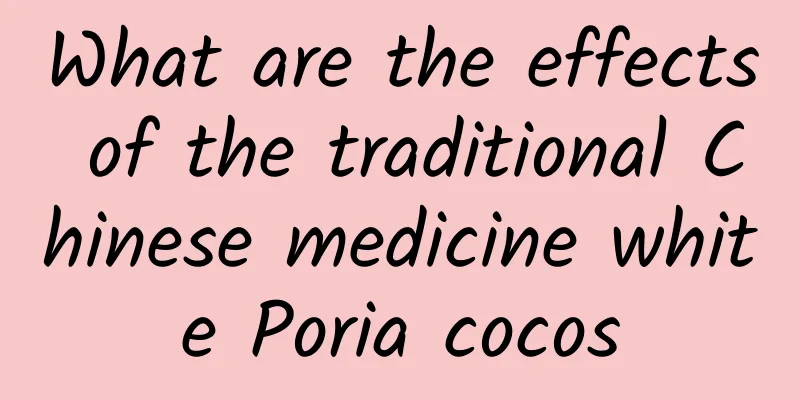The effects and functions of poison hemlock root

|
We know that there are many kinds of Chinese medicinal materials, and poison hemlock root is one of them. In order for poison hemlock root to work correctly and scientifically, you need to master how to eat it, because different medicinal herbs have their own unique nutrition and efficacy. Let’s study it below. [Other name] Zoumaqin (Liaoning "Selected Materials on New Chinese Herbal Medicine Treatment Methods") [Source] It is the root of the poison hemlock plant of the Apiaceae family. After picking, wash and dry. [Original form] Perennial herb, about 90 cm tall. The stem is thick and hollow. Leaves are alternate, broadly ovate, pinnately divided 2 to 3 times; lobes are broadly lanceolate, gradually pointed at the apex, cuneate at the base, with coarse serrations of varying depths on the margins; the base of the petiole is wide and spread out to form an oblong sheath. The compound umbels are terminal or axillary, lacking involucre; the involucre has several long lanceolate bracteoles, with 14 to 18 rays of unequal length and smooth; each umbel has 28 to 31 flowers; the flowers are white, with large and obvious calyx teeth; there are 5 petals, ovate, with involute tips; there are 5 stamens, alternate with the petals; the ovary is inferior, with a short style and a flat base. The double-hanging fruit is oval and smooth. The flowering period is from October to November. Fruiting period is December. [Habitat distribution] It grows in wet places, distributed in northern and northeastern my country. It is cultivated in Jiangsu. [Chemical composition] The whole plant contains the toxic ingredient conitocyanin and the non-toxic ingredient coniol. [Pharmacological action] Poison hemlock is one of the highly poisonous plants. Its toxic component, conitoxin, is a neutral resin-like substance that has a picrotoxin-like effect. It is easily soluble in alcohol and alkaline solutions. It is mainly contained in the roots, but also in other parts. Conitoxin is easily absorbed. People will be poisoned within minutes of ingesting it. Their lips will often develop blisters (even blood blisters). Its main toxicity is on the central nervous system, where it has a very significant spasmolytic effect. After poisoning, people will experience dizziness, vomiting, convulsions, redness of the skin, blue complexion, and finally paralysis and death from respiratory failure. In animal experiments, very small amounts can inhibit the central nervous system, have a sedative effect, slightly lower blood pressure, and slightly increase urine output; large amounts can cause convulsions, increased blood pressure, accelerated breathing, and ultimately respiratory arrest. It has a certain degree of awakening effect on hypnotic (barbiturate) poisoning without antagonizing its lethal effect. The antagonism between the two is not selective. The lethal dose for cats by intravenous injection is 5.36 mg/kg, and for mice by intraperitoneal injection is 48.3 μg/g. Deaths from poisoning have been reported around the world. There are reports of poisoning from even a small amount through dry skin. This toxin is heat-stable and its toxicity remains unchanged when stored at 0-5°C for 8 months. Poisoning rescue includes gastric lavage, artificial respiration, oxygen and barbiturate (depending on the situation). In Europe, people use this plant to make ointments or infusions for external use to treat certain skin diseases and as an analgesic for gout, rheumatism, neuralgia, etc. [Function and indication] Liaoning "Selected Materials on New Chinese Herbal Medicine Treatment": "Treatment of osteomyelitis. Take an appropriate amount of poison hemlock root. After washing, crush it with a stone tool, dry it, grind it into fine powder, mix it with egg white and apply it on the sore; or crush fresh poison hemlock and mix it with egg white and apply it on the sore. Apply the medicine once a day for three to five times in a row. 【Note】 This product is highly toxic and is prohibited for oral administration. 【Excerpt】 《*Dictionary》 [Source] From "Selected Materials on New Chinese Herbal Medicine Treatment Methods" The above describes some ways to eat poison hemlock root. Although many medicinal herbs can be eaten, we must remind everyone that Chinese medicines generally cannot be taken indiscriminately and should be used according to your own situation. |
<<: The efficacy and function of Cassia cassia
>>: The efficacy and function of Snakehead sphagnum
Recommend
How to combine kidney-tonifying Chinese medicine
What we know: Kidney deficiency is common. And no...
How to use dried wormwood
The uses of dried mugwort are very diverse. It is...
What are the effects of crucian carp gall grass
Crucian carp gallbladder grass is a relatively co...
The main character of the starship's first flight was replaced. What is the strength of the new combination of Raptor configuration?
The starship's first flight changes the prota...
Don't set your alarm like this! It can cause more harm than you think...
"Ding-ling, ding-ding~~~" How many alar...
Residents of the solar system, we are now looking for a name for the "Advanced Space-Based Solar Observatory" that humans are about to launch.
"The sun is just the primary puzzle of the u...
From a Boxer Indemnity student to the president of the Chinese Academy of Sciences, why did he first propose to develop the country through science and technology?
August 17, 1937 was the fifth day of the Battle o...
Is the new euthanasia capsule truly painless?
Death is a long and painful process for most peop...
What are the benefits of goose not eating grass
As for what are the effects of goose not eating g...
The efficacy and function of ground rose
What are the functions of ground rose? As a tradi...
This seemingly shameful action is actually a "savior" for the lumbar spine! People with back pain should learn this quickly
I once saw a short video in which a blogger serio...
The efficacy and function of hibiscus leaves
Since Chinese medicine has fewer side effects, mo...
The best Chinese medicine for nourishing liver and kidney
Traditional Chinese Medicine is an effective and ...









